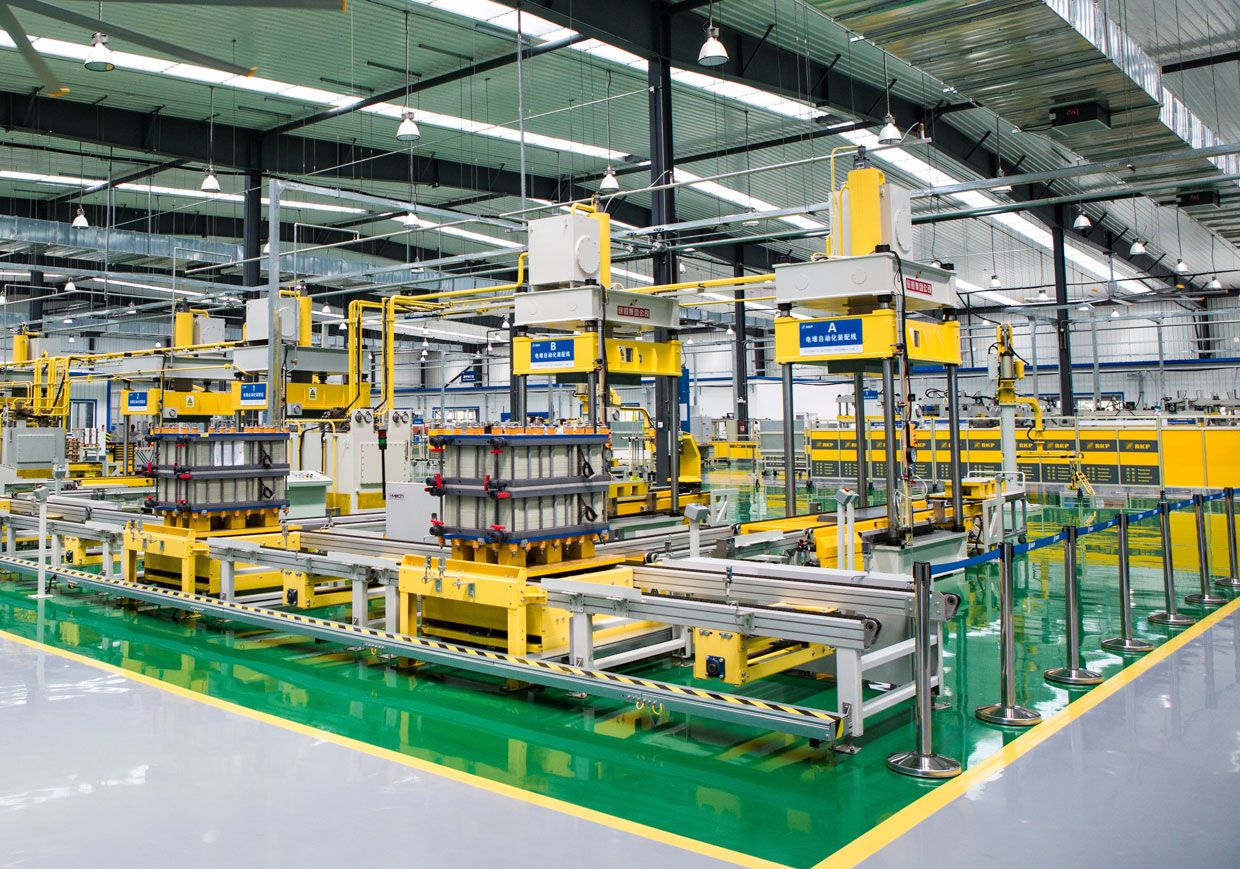From IEEE Spectrum:
Move over, lithium ion: Vanadium flow batteries finally become competitive for grid-scale energy storage

The factory sprawls over an area larger than 20 soccer fields. Inside, it’s brightly lit and filled with humming machinery, a mammoth futuristic manufactory. Robot arms grab components from bins and place each part with precision, while conveyor belts move the assembled pieces smoothly down production lines. Finished products enter testing stations for quality checks before being packed for shipping.
It has been called a gigafactory, and it does indeed produce vast quantities of advanced batteries. But this gigafactory is in China, not Nevada. It doesn’t make batteries for cars, and it’s not part of the Elon Musk empire.
Opened in early 2017, in the northern Chinese port city of Dalian, this plant is owned by Rongke Power and is turning out battery systems for some of the world’s largest energy storage installations. It’s on target to produce 300 megawatts’ worth of batteries by the end of this year, eventually ramping up to 3 gigawatts per year.
The scale of this “other” gigafactory may be impressive, but the core technology it makes is even more compelling. The Dalian factory produces vanadium redox-flow batteries, a specialized type whose time has finally come. The VRFB was invented decades ago but has emerged only recently as one of the leading contenders for large-scale energy storage.
How large? VRFBs are being touted for grid-scale uses in which they would store up to hundreds of megawatt-hours of energy. In these applications, they may be charged by large baseload power plants, which generate electricity cheaply but are too sluggish to accommodate sharp increases in demand during peak hours. Or they may be charged by renewable sources like wind farms, whose generation doesn’t always align well with demand. Like most batteries, VRFBs can deliver power nearly instantaneously, so they can stand in for the traditional means of meeting peak demand: fossil-fueled “peaker” plants that, in comparison with batteries, are costly to maintain and operate and not as fast.
Lithium-ion batteries, too, have been proposed for grid-scale uses. But here they are no match for VRFBs, which have longer lifetimes, can be scaled up more easily, and can operate day in, day out, with no significant performance loss for 20 years or more.
Soon this technology will be the cornerstone of the largest battery installation in the world: a 200-MW, 800-megawatt-hour storage station being built in Dalian. The first 100 MW will be installed by the end of this year, with the remainder coming on line in 2018. The station will help balance supply and demand on the Liaoning province power grid, which serves about 40 million people, filling the same function as a peaker power plant but without using scarce water. Furthermore, if the batteries are charged by the wind-generated power that’s abundant in northern China, no fossil fuels will be burned. Should demand spike or the supply dip suddenly, the battery station will be able to dispatch all or just part of its 200 MW within milliseconds.
The result will be a stable grid that can integrate more renewable energy. At times, wind generation in Liaoning province tops 7 GW, or about 15 percent of total generation. But much of that power isn’t used because other sources already meet grid demand. Earlier this year, the amount of wind power in Liaoning that was curtailed, or wasted, reached 15 percent; in the neighboring province of Jilin, it was 30 percent. The Dalian site will store that wasted energy for later use, adding up to a few hundred gigawatt-hours per month.
The Dalian site is just one of several big VRFB installations being built in China, so its reign as the world’s biggest battery may be short. Meanwhile, other countries are adopting VRFBs. According to the U.S. Department of Energy’s global energy storage database, since 2014, more than 30 VRFB projects in 11 countries have been deployed or begun construction; these range in power from a few tens of kilowatts up to Dalian’s 200 MW. While these projects reflect the surging interest in all forms of energy storage, what’s driving the renewed push toward VRFBs are important technological distinctions.
Today’s state-of-the-art vanadium redox-flow batteries started out as a modest research project at the Pacific Northwest National Laboratory (PNNL), a U.S. Department of Energy lab in Washington state. The PNNL team, which I led, came together in 2007, at a time when world oil prices were steadily climbing. The economies of China and India were experiencing double-digit growth, and environmentalists were concerned about the accelerating rate at which they (and other countries) were consuming fossil fuels. In the United States, awareness was starting to build about the potential of renewable but intermittent energy sources like wind and solar.
Against that backdrop, we decided to search for a better way to store renewable energy as a means of promoting its adoption while also improving grid reliability. Our group included the lab’s top experts on power, materials, and chemistry, as well as an intellectual-property lawyer, Peter Christiansen, who has a background in power engineering. Peter helped focus our efforts on technologies that would have the greatest societal impact. In 2009, our group began receiving significant support from the DOE’s Energy Storage Program, which boosted our annual R&D budget to US $10 million.....MORE